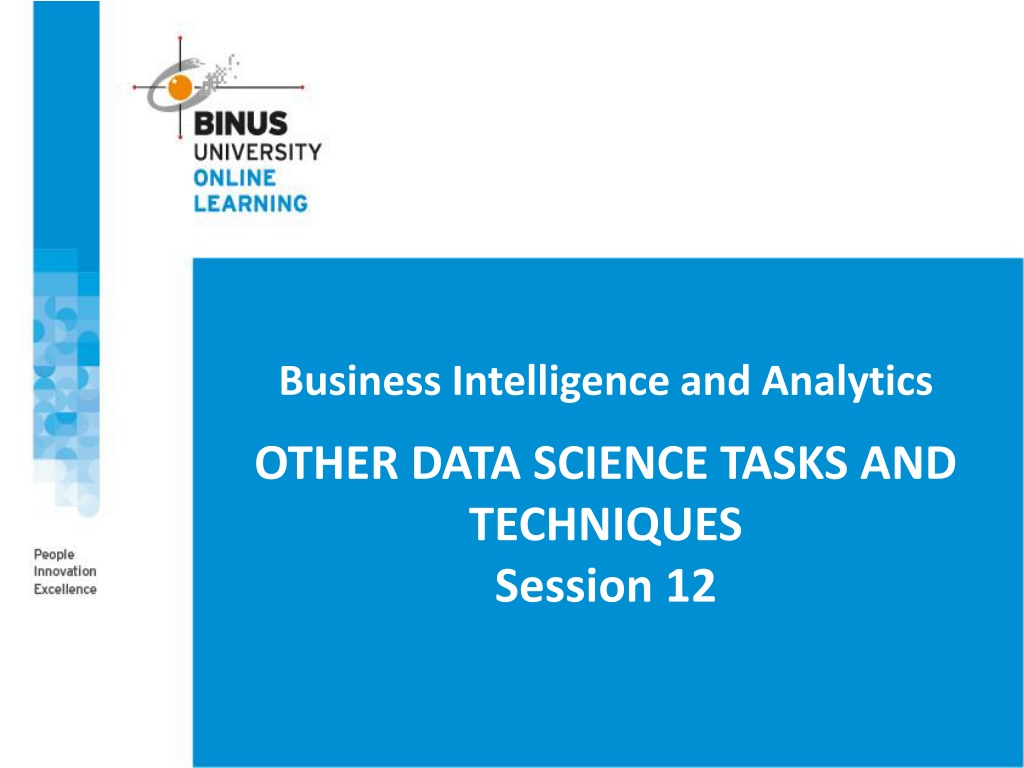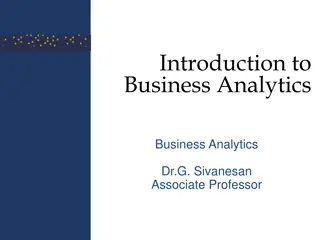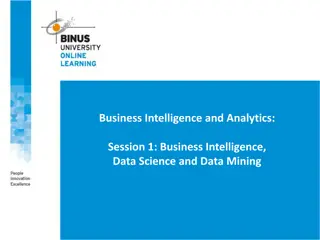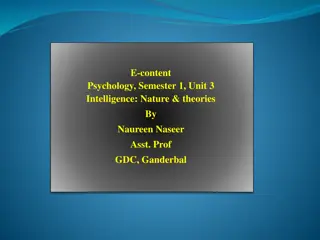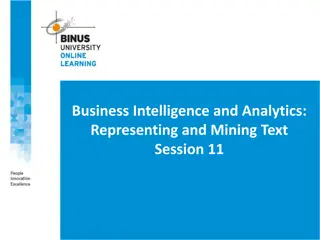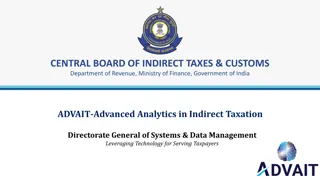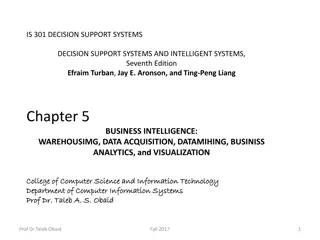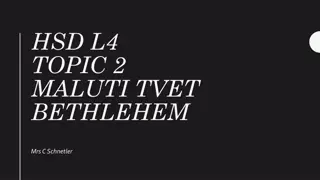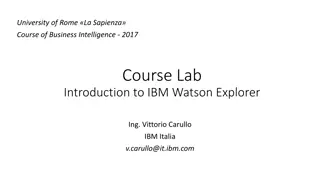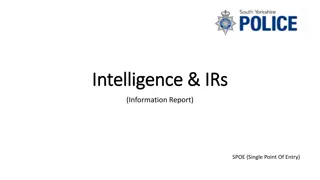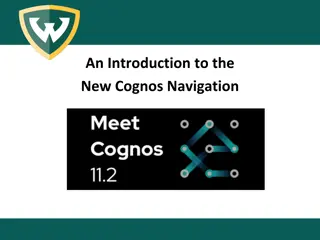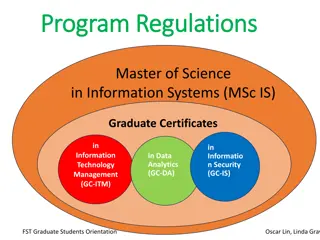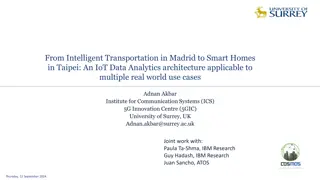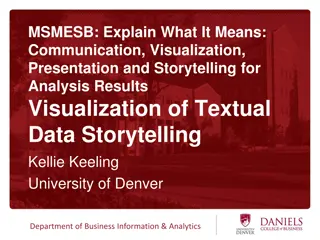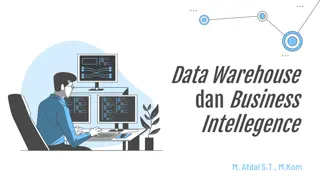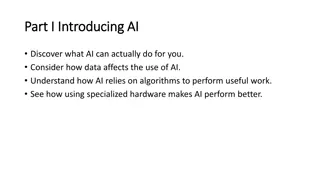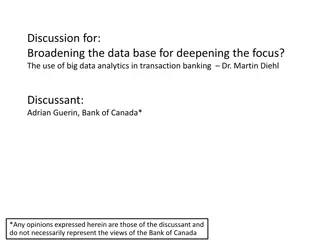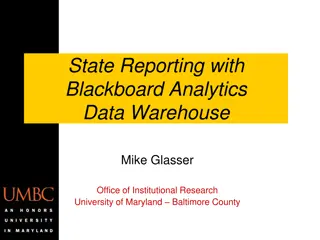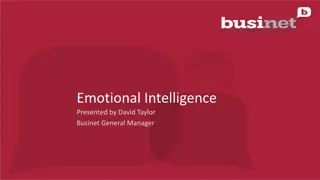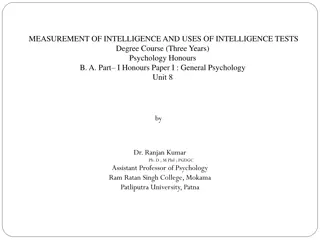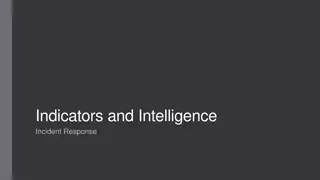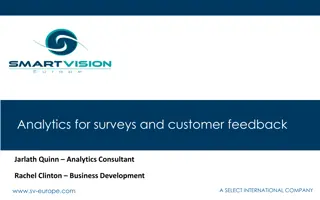Data Science Techniques in Business Intelligence and Analytics
Explore various data science tasks and techniques in business intelligence and analytics, including co-occurrences, associations, complexity control, surprise measurement, profiling, and link prediction. Learn how these methods help in understanding patterns, behaviors, and connections within data to drive better business decisions.
Download Presentation

Please find below an Image/Link to download the presentation.
The content on the website is provided AS IS for your information and personal use only. It may not be sold, licensed, or shared on other websites without obtaining consent from the author. Download presentation by click this link. If you encounter any issues during the download, it is possible that the publisher has removed the file from their server.
E N D
Presentation Transcript
Business Intelligence and Analytics OTHER DATA SCIENCE TASKS AND TECHNIQUES Session 12
Co-occurrences and Associations Complexitycontrol: Supportofassociation Let s saythatwerequirerulestoapplytoatleast0.01%ofall transactions Confidenceorstrengthoftherule Let s say that we requirethat5%ormoreofthetime,abuyerofAalso buysB Measuringsurprise:
Example: MIE and TELUR Weoperateasmallconveniencestorewherepeoplebuygroceries, liquor,lotterytickets,etc.Weestimatethat: 30%ofalltransactionsinvolveMIE, 40%ofalltransactionsinvolveTelur , and20%ofthetransactionsincludebothmieandtelur.
Example: Mie and Telur If the two products are unrelated: Otherwise: Support (mie,telur)=20 % Strength(mie,telur)=p(telur|mie)=67%
Profiling: Finding Typical Behavior Profilingattemptstocharacterizethetypicalbehaviorofan individual,group,orpopulation Profilingcanessentiallyinvolveclustering,iftherearesubgroupsof thepopulationwithdifferentbehaviors
Profiling Source: Data Science for Business; Fundamental Principles of Data Mining and Data- Analytic Thinking.
Profiling Source: Data Science for Business; Fundamental Principles of Data Mining and Data- Analytic Thinking.
Profiling Source: Data Science for Business; Fundamental Principles of Data Mining and Data- Analytic Thinking.
Prof Source: Data Science for Business; Fundamental Principles of Data Mining and Data- Analytic Thinking.
Link Prediction and Social Recommendation Sometimes,insteadofpredictingaproperty(targetvalue)ofadata item,itismoreusefultopredictconnectionsbetweendataitems Acommonexampleofthisispredictingthatalinkshouldexist betweentwoindividuals Linkpredictioncanalsoestimatethestrengthofalink
Data Reduction and Latent Information Trade-offbetweentheinsightormanageabilitygainedagainstthe informationlost
P . Adamopoulos New York University Source: Data Science for Business; Fundamental Principles of Data Mining and Data- Analytic Thinking.
Latent Information and Movie Recommendation Source: Data Science for Business; Fundamental Principles of Data Mining and Data- Analytic Thinking.
Bias, Variance, and Ensemble Methods The errors a model makes can be characterized by three factors: 1. Inherent randomness, 2. Bias, and 3. Variance.
References Provost, F.; Fawcett, T.: Data Science for Business; Fundamental Principles of Data Mining and Data- Analytic Thinking. O Reilly, CA 95472, 2013. Carlo Vecellis, Business Intelligence, John Wiley & Sons, 2009 Eibe Frank, Mark A. Hall, and Ian H. Witten : The Weka Workbench, M Morgan Kaufman Elsevier, 2016. Jason Brownlee, Machine Learning Mastery With Weka, E-Book, 2017 Sharda, R., Delen, D., Turban, E., (2018). Business intelligence, Analytics, and Data Science: A Managerial Perspective, 4th Edition, Pearson.
